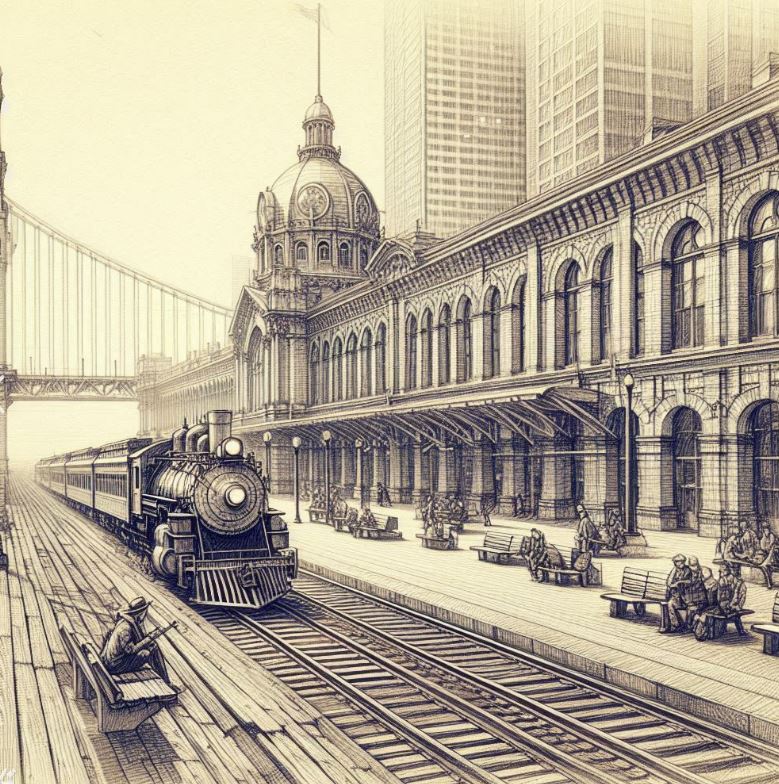Dreams of the East and Gold of the West
In the 1830s, the American continent’s East and West felt as distant as dreams and reality. Easterners dreamed of gold and new lives in the West, while Westerners longed for Eastern products and markets. However, formidable mountain ranges and vast plains were a significant barrier between these two worlds.
In 1853, the California Gold Rush set America ablaze. Many headed west, but the journey was far from easy. Traveling by wagon or ship was arduous and costly. Amid these challenges, Eastern politicians began to dream of constructing a railroad to connect the East and West, though technological difficulties and lack of funding stalled these ambitions.
In 1861, a young civil engineer named Theodore Judah set out to make the dream of a transcontinental railroad a reality. He explored the Sierra Nevada mountains in California, studying possible routes for the railroad. Armed with his plans, he met with President Abraham Lincoln to emphasize the importance of building a transcontinental railroad.

Despite the ongoing Civil War, President Lincoln pushed for the construction of the railroad to promote national unity and economic development. In 1862, the Pacific Railway Act was passed, securing government support for the construction of the Union Pacific Railroad (East) and the Central Pacific Railroad (West).
Construction Challenges and Triumphs
Both companies began construction from Omaha and Sacramento, respectively. Despite facing difficult terrain, harsh weather, and labor shortages, the work progressed. The Union Pacific Railroad crossed the plains from the east, while the Central Pacific Railroad laid tracks through rugged mountain ranges from the west.
On May 10, 1869, the Union Pacific and Central Pacific Railroads met at Promontory Summit, Utah, completing the railroad that linked the East and West. Leland Stanford, President of the Central Pacific Railroad, drove the ceremonial “last spike” made of gold with a silver hammer to mark the occasion. Within six months, the final segment from Sacramento to the San Francisco Bay was completed. This innovation dramatically transformed settlement and economic activity in the American West, bringing Western states and territories into harmony with the Northern Union states. Transportation of passengers and goods became faster, safer, and more affordable.

The First Transcontinental Railroad Journey
The first transcontinental railroad passengers arrived at the Alameda Terminal, the initial western terminus of the Pacific Railroad, on September 6, 1869. From there, they took the steamship Alameda to San Francisco. Two months later, on November 8, 1869, the terminus moved about a mile north to the Oakland Long Wharf, which then opened to passengers. Ferry service continued to connect San Francisco and the Oakland Pier, ensuring ongoing transportation between these pivotal points.

Leave a Reply